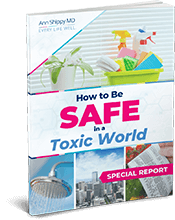How To Feed Your Kids – Answers To Your Most Burning Questions
So many challenges arise with feeding kids in today’s world.
Everything from navigating food introductions and teaching your kids about good nutrition while living in a sea of processed foods, to the rebellions that arise with food as the centerpiece of our children’s entertainment.
We all want the best for our kids, and that includes around the dinner table, but how do we navigate school lunches and family meals when there is so much else on our plates?
What if there is no need to cook separate meals for everyone in the family or supply separate “kids food.” The whole family can enjoy whole, quality food.
Today’s article will dive into some of the most frequently asked questions when it comes to childhood nutrition.
Keep reading for advice on feeding your children, from infants to teens.
We will cover:
- Reasons why food allergy rates are on the rise
- First foods to introduce
- Picky toddler eating behaviors
- Rebellious teenagers
Nutrition As The Foundation Of Health
Nutrition is fundamental for growth, development and health into adulthood. You might be surprised to learn that this begins before birth, and even before conception. Nutrition affects epigenetics that are passed through generations.
On this epigenetic level, what you eat (and what your kids eat) informs the body about the environment you live in. Simply, food is information for your genes. The information you supply determines many factors of health.
In the debate of nature vs. nurture, nurture is modifiable and has a greater impact. Nutrition is a huge piece of this.
Early exposures to food and flavor help to shape preferences for life. Tastes are even passed through the amniotic fluid and breast milk!
No matter what stage you are at with your kids, it’s never too late to make some shifts in nutrition to support your family and future generations.
Kids Feeding Challenges FAQs
Why do so many kids have food allergies?
Food allergies and sensitivities in children might show up as severe, life-threatening allergies (anaphylaxis), eczema, ADD (Attention Deficit Disorder) digestive issues or an array of other symptoms.
There are many reasons that help explain the increase in food allergies and food sensitivities in children.
Here are some, and likely multiple pieces play a role for each child:
- Wheat hybridization – Wheat crops have been hybridized to have much higher gluten content than the ancient grains humans evolved with, leading to higher rates of sensitivity and leaky gut.
- GMOs – Genetically modified organisms, or GMOs, are genetically altered plants that the human body has not adapted to. Like gluten, GMOs and the associated herbicides, including glyphosate, impact the health of the gut lining and may make one more susceptible to food allergies. In addition, two of the most common GMO crops, corn and soy, are also in the top 8 allergens.
- Loss of nutrient density – Many of the common foods that children eat are highly processed and nutrient deficient compared to a more nutrient-dense real food diet eaten just a couple generations ago.
- Toxins – Besides the toxins we mentioned in food, both air pollution and cigarette smoke are linked to food allergies.
- Altered microbiome – diet, stress, medication and other factors affect the microbiome which is directly linked to immune health. In addition, the mother passes her microbiome on to her child through childbirth so the mother’s microbiome matters too. Cesarean section (vs. vaginal delivery) and formula feeding (vs. breastfeeding) also impact the development of a healthy microbiome.
- Too much cleanliness – The hygiene theory suggests that too much cleanliness from antibacterial soaps, hand sanitizer and less exposure to the natural world leads to an overactive immune system.
When we understand what contributes to food allergies and sensitivities, we can make changes in our lifestyle that address the underlying factors.
What are the best first foods to introduce to my baby?
Six months is around the time when most breastfed babies are ready to try solid food, but this can vary from baby to baby.
You’ll know your baby is ready when they can sit unassisted, hold their head up well and their tongue thrust reflux (that pushes things out of their mouth) has diminished. In addition, your baby will begin to show interest in food.
As you introduce solids, your baby will continue to get the majority of their nutrition from breast milk (or formula) so be sure to continue that. The main goal with food introductions before age one is to explore and play.
The most common first food that pediatricians recommend is iron fortified organic rice cereal. This is because breast milk isn’t a great source of iron and by around 6 months, your baby will need to begin getting some additional iron from their diet.
Rice cereal carries concerns about arsenic, pesticide and other toxin contamination and is more processed than other options. For iron, consider soft-cooked and pureed meats.
Other first – foods suggestions include (all organic):
- Egg yolk
- Avocado
- Applesauce
- Bananas
- Steamed carrots
- Pears
- Vegetables cooked in bone broth
Foods can be introduced as soft, pureed foods or as larger pieces of food that babies can pick up and suck or bite on as in the case of Baby Led Weaning, or a combination of the two.
Note that it often takes several introductions to a new food for acceptance so keep offering healthy options.
How do I handle a picky toddler who doesn’t want to eat at mealtime?
When infants first start eating, mealtime is about imitation. It is an important time for parents and caregivers to model good habits right off the bat.
With toddlerhood comes a whole new set of challenges. Young kids may use mealtime to assert independence and control.
They may go through food jags, where they eat only certain things. They’ll continue to have some aversion to new foods. And sometimes the list of accepted foods gets really small.
Ellyn Satter’s Division of Responsibility is a helpful strategy for boundary setting. For toddlers through adolescents the division goes like this:
The parent/caregiver is responsible for:
- What food is provided – choose whole foods and balanced meals
- When food is served – provide regular meals and snacks
- Where food is served – make mealtimes pleasant
The child is responsible for:
- Whether they eat or not when food is provided
- How much they eat from what is provided
When parents uphold their responsibility, so do children. This allows the child to eat to their own body’s cues and eat the same meals as the family. It may take a period of adjustment, but this framework may be a solution for you and your family to decrease stress and battles over meal times.
How do I handle my rebellious teenage eater?
Teenagers experience a lot of social pressure to fit in and that sometimes means eating fast food, junk food and more sugar. Alternatively, this can mean food restriction or early dieting as diet culture is very much present in high school (and sadly even at much younger ages these days!).
This is stressful for parents who’ve worked hard over the years to instill a healthy food environment at home and on one hand, they want to allow their teens to make their own choices, but on the other hand are worried about their health.
Here are some tips for parents:
- Start early. This means providing nourishing food in your home when your children are young (even before they are born!) and model a healthy relationship with food and body yourself. This creates a solid foundation and even if a teen strays, they will ultimately come back to the food preferences that were established early on.
- Provide structure and family meals at home. Continue to provide nutritious food in the home to your teens. At least when they are at home, they will be getting the nutrition they need, even if they make other choices out of the home. Check out these recipes for family meal ideas.
- Don’t make comments about your teen’s body. Love them just as they are and continue to create a healthy environment at home, both with food and with language and acceptance for different body shapes. There is no need to push them to change their body because of how the world may perceive them, and in fact that may have more negative consequences.
- Focus on sleep and stress management. Teens tend to sleep less than their bodies need and face a lot of pressure in school, sports and socially. Both lack of sleep and high stress play out in food choices and metabolic changes that affect their bodies and health. Work with your teen to establish good daily rhythms and create a relaxing and nurturing home environment. Find more sleep tips here.
Different challenges with food arise through different stages of life and hopefully the information here answers some of your most burning questions, no matter your current phase.
We all want what’s best for our children and sometimes giving them that is as simple as sitting together at the table with a delicious home cooked meal.
References
- https://pubmed.ncbi.nlm.nih.gov/30982867/https://pubmed.ncbi.nlm.nih.gov/30982867/
- https://pubmed.ncbi.nlm.nih.gov/15683179/
- https://pubmed.ncbi.nlm.nih.gov/15125698/
- https://pubmed.ncbi.nlm.nih.gov/30564985/
- https://pubmed.ncbi.nlm.nih.gov/15167035/
- https://pubmed.ncbi.nlm.nih.gov/31769273/
- https://www.ellynsatterinstitute.org/keeping-your-nerve-with-the-division-of-responsibility-in-feeding/
- https://www.tandfonline.com/doi/full/10.1080/19490976.2021.1897210?src=recsys
- https://www.sciencedirect.com/science/article/abs/pii/S1471491414002160
- https://www.consumerreports.org/baby-rice-cereals/wic-still-includes-baby-food-known-to-be-high-in-arsenic-a5189550805/
- https://www.ewg.org/news-insights/news/2021/05/arsenic-baby-food-ny-attorney-general-launches-probe-four-major-brands
- https://www.fda.gov/food/metals-and-your-food/closer-zero-action-plan-baby-foods














